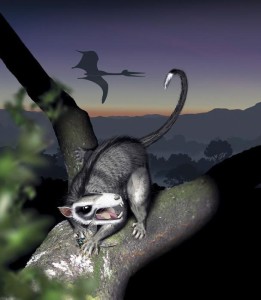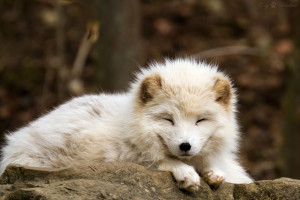66 million years ago an asteroid 15 kilometers across smashed into the Gulf of Mexico with the power of more than a billion atomic bombs. This catastrophic moment, the stuff of Michael Bay films, caused wildfires, earthquakes and the release of debris which smothered the Earth’s surface, plunging it into permanent darkness for months. It was this monumental event which wiped out the last of the dinosaurs. It took millions of years for the Earth to recover from the asteroid impact at the Cretaceous – Paleogene boundary, a.k.a. the K – Pg boundary, but once it had, it was not the dinosaurs which roamed the Earth freely, it was the mammals. This, obviously tragic event for the 65% of life on Earth that perished, was actually a stroke of good luck for the mammals. The absence of competition post asteroid collision allowed the mammals to flourish, it ushered in the Cenozoic era, or the more aptly named ‘Age of the Mammals’.

An artistic impression of a multituberculate; they were an extremely successful group of mammals which survived for 120 million years
Before the extinction of the dinosaurs at the K – Pg boundary the diversity of mammals was positively tiny in comparison to the variety we have today, most of the mammals were rodent type creatures called multituberculates which are now long extinct. After the K – Pg boundary, about 130 new genera of mammals evolved in 10 million years, by geological standards this amount of time is merely a flash. It was an ‘explosion’ of new species with new morphological forms; including flying mammals, aquatic mammals and species which are now extinct such as the giant sloth.
So why did they diversify in a ‘flash’ after the extinction of the dinosaurs?
The traditional view is that dinosaurs completely dominated Earth fauna and so it was only after their death that mammals had the chance to radiate. In the absence of dinosaurs, the mammals could fill niches that previously were not available to them. They had the ecological opportunity to adapt to a variety of different habitats that were previously filled by the dinosaurs.
Is this the only reason why they diversified so much in the Cenozoic era? We must not forget that after this ‘flash’ of radiation the mammals have continued to evolve to this day.
Paleontological data gives evidence which points towards an explosion of adaptive radiation after the K – Pg boundary, but molecular data presents older dates which are around 20 million years earlier. These dates have gained traction because the fossil record is currently very incomplete and they also correlate with important biogeographical events which were happening at the time. For example around 200 million years ago Pangaea had begun to fractionate into different continents via continental drift. During the fractionation of land masses in the Mesozoic, mammals obviously got ‘stuck’ on certain continents, they were reproductively isolated in their respective land masses which had different ecological conditions – natural selection ensued.
It was previously consensus that during the Mesozoic period dinosaurs imposed selection pressures upon mammals so they could not evolve new innovations, yet recent studies of the dentition of multituberculates has brought forward the argument that they actually did evolve specialized dentition long before the K – Pg boundary. Interestingly the adaptive response coincided with the increase in ecological diversity of the angiosperms (the flowering plants) which first arose in the late Cretaceous. The angiosperms were perfect food for the slowly radiating mammals, they had a rapid life cycle, less effective herbivore defences and were herbaceous. To add more to this theory there was a dietary trend around 20 million years previous the K – Pg boundary which moved towards herbivory and herbivorous omnivory of Mammalia.
Even if the radiation of mammals did start off in the Mesozoic, the beginning Cenozoic period was still the time where diversification really began to kick off. One of the most important driving factors was climate change. The climate determines the vegetation that is able to grow in a particular area; and the fauna present is of course determined in part by the vegetation present. The beginning of the Cenozoic was a tropical hot house that resembles the humid conditions of the Amazon rainforest, however as time progressed the climate of the world gradually became cooler with rainforests being limited to the equatorial region. These diverse climates caused mammals to adapt to different habitats.
Whether you think the radiation of mammals was triggered by the extinction of the dinosaurs, or by climate change; the ‘Age of the mammals’ has produced one of the most morphologically varied clades on Earth. If you don’t believe me take a look at these two animals, they’re both so vastly different, yet they belong to the same clade!
![The Age of Mammals 66 million years ago an asteroid 15 kilometers across smashed into the Gulf of Mexico with the power of more than a billion atomic bombs. […]](/wp-content/uploads/2015/02/6997239173_3ec50765b8_o-608x361.jpg)

